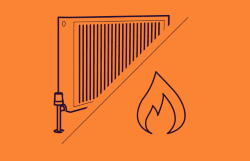Energy lives at the heart of trade, business and industry. Today, organisations are spending more money on energy than ever before, and, this will only rise in the future. This means that purchasing energy will continue to be vital within the energy management and procurement profession.
Here, we look to consider the energy markets and how legislation is impacting the future of our energy prices. We look at the predominant energy sources of electric and gas, and now these markets may operate differently, alongside reviewing the information needed to procure energy in these markets, and acknowledge practical steps in how to do this in the best way.

A number of things impact the energy markets and their prices, alongside their stability, such as:
Global Supply
Both Saudi Arabia and the USA are global energy producers, and have a major influence over oil output and oil prices. This, followed by Europe gas connections being coupled with Russia, it is clear why the availability and price of the product may rise and fall. These factor mean that the stability of our energy can be volatile and fast-changing, dependant on global events.
While UK gas is not directly imported from Russia, their two largest customers, Germany and the Netherlands, are connected to the UK via two major gas pipelines.The UK is, though, taking 61% of their imports from Norway.
57% of the UK’s gas is supplied from imports from the countries above, and this is estimated to rise by 2040 by 36%.
Political Intervention
Our governments intervene with the energy markets often to attempt reform, which can be seen in the likes of the Climate Change Act, Renewable Energy Directive, Energy Act, Feed-in Tarrif, Renewables Obligation and Climate Change Levvy, and more. Although this is wonderful for our global health, this has directly led to an increase in costs.
With the aim of cutting carbon emissions by 37% by 2020, The Climate Change Act (CCA) was enforced in 2018, and hopes to expand into cutting 80% of emissions by 2050 against a 1990 baseline.
Five year carbon budgets have also been set until 2032. Considered somewhat of a milestone to achieve the 2050 re-education targets set by CCA.
The Renewable Energy Directive requires all members of the EU to commit to not only purchasing, but also promoting the renewable energy generation by 2020.
The Energy Act makes sure that the demands for energy are met irregardless of decarbonisation and older power plants slowly falling into closure, by investing more money into new schemes and infrastructure.
Feed-in Tarrifs (FiT) are also common in the UK, which promote the use of technologies used to generate renewable and low carbon electricity, generally on a smaller scale. This works by asking electricity suppliers to pay towards generating and exporting electricity.
Companies can be supported in larger scale generating via the Renewables Obligation (RO). Here, electricity suppliers find and collect electricity from renewable sources.
Non-domestic consumers are charged a Climate Change Levy (CCL) in tax. This is in place to inspire a reduction to energy consumption and emissions for those who are not sourcing low carbon or renewable fuels. To put it simply, you are being taxed for using harmful gasses and fuels that will have a direct result on our environment.
Traded Commodity
Just like in the stock market, your energy is being traded and exchanged as commodity. This means that the prices will be constantly changing, due to a number of factors- The state of our world, the amount of energy available and its environmental impact. Of course, this means that there are both good and bad times to purchase energy. This type of trading allows for energy to be bought in advance, for example, at the lowest price, for both short and longer term usage. Energy can be bought to use in one day, week, month, even up to five years. Prices for specific amounts can be set in stone, but a price lock is a form commitment to Take-Or-Pay.

Hedging
Hedging is another option; acting like an insurance policy, a free is paid upfront to guarantee a capped commodity price. Putting it simply, paying this fee means that you will not have to deal with larger jumps in the market when prices change. If the market ends up being higher than the cap, the counterpart refunds the difference.
Capacity
20% of the UK’s electricity generation capacity has been lost since 2010, with an estimated 35% loss by the end of 2030. This is due to closures in power stations. Moreover, the demand, as expected, is anticipated to increase, adding further pressure to meet the market demand and general needs.
The UK infrastructure is growing older, it has had little investment in some time and is nearing capacity.
Distributors charge customers the amount of energy they are using, as well as the maximum demand, which customers are charged whether reach it or not, on peak. This method, known as Demand-side response, is a new approach to increasing the flexibility of energy consumption by rewarding customers for changing their energy routines; this can be done through new tariffs, schemes and technologies such as smart meters.
The Triad Charging System also concentrates on controlling the demand by improving efficiency in the network and reducing the energy charges for large industrial consumers. With TCS, consumption is measured every 30 minutes, with three triad ‘periods’ during winter where energy use is most demanding. It is during its peak that this peak price is calculated; Businesses and suppliers may receive charges for distribution and transmitting of energy that they have purchased, which are then passed on to the customer through the transmission use of network, or TUoS. TUoS makes its money back by recovering this from running and maintaining the national grid.
They will then receive DUos, Distribution Use of Network Charges, where the cost of Transmission Use of Network as explained above is recovered, for distributing electricity across the national network.
Big Players
The largest energy companies overtake the market in the UK, and known as the “Big Six”, they are the majority of names supplying our energy today. The Big Six are as follows…
- SSE
- EDF Energy
- British Gas
- Npower
- E.ON UK
- Scottish Power
All suppliers should face commodity and transport costs, as well as government taxes that result from policies introduced to fund renewable energy.
Energy Markets Regulator
The United Kingdom and Ireland are regulated by The Office of Gas and Electricity Markets, otherwise known as Ofgem, or Ofreg in Northern Ireland.
OfGem is a non-ministerial department that regulate the majority businesses which run the gas and electricity networks used by all suppliers throughout the country. They have final say over controlling price and enforcement, with the customers best interest at heart, as well as working towards the governments environmental goals.
OfGem is governed by the Gas and Electricity Markets Authority (GEMA), which are a body created to determine strategies, make regulatory decisions and set priorities for changes in policy. It consists of members with a wide range of experiences and titles, from the likes of the economic or science industries.
Smart Meters
September 2017 saw suppliers of all sizes as responsible for the operation of 7.67m smart meters in domestic properties, and 939,700 in smaller, non-domestic sites.
By 2020, the UK requires suppliers to install smart meters into homes and businesses to save energy and reduce cost. This is a Government led programme with the goal of upgrading the UK’s energy systems. It is estimated that the goal of a smart meter in every household should be reality by 2030, which provides a net economic benefit of 6.2bn.
The Committee on Climate Change report that consumers energy bills will rise by 10 to 15% by 2020, an 0 to 45% by 2030.

Electricity Market
The Electricity Market holds a simple structure from customer to aggregator in a number of steps;
Customer > Supplier > Generator > Distributor > Meter operator > Meter asset manager > Data Collector > Data aggregator.
Gas Market
The Gas Market holds a simple structure from customer to meter reader in a number of steps;
Customer > Supplier > Shipper > Transporter > Meter operator > Meter reader.
Some customers use energy brokers to gain energy on behalf of customers, to then help them in their steps towards supplying their home or business. This can be done through a variety of services such as data collection, tendering, voice audits, remote access, standardised reports, market intelligence, budgeting support and optimisation of commodity cost.
It is smart to first consider whether your broker is an independent broker and whether they follow an internal or external code of practice in ensuring good governance and good nature when referring to the interests of the client. Where some brokers may work with one morally sound code, another broker may not, and writing an agreement to define goals between the customer and the broker is often ideal in order to ensure that you are on the same page. This may also include key performance indicators and reporting or information sharing.
Information needed for energy procurement
Earlier, we wrote about how to collect information for organising procurement. This should be made into a tender pack which should include a handful of aspects, outlined as;
- Length of contract period to be considered (including options for locking and hedging)
- Payment terms, for example, net 30 days
- Trading strategy – The number of of events and quantities to be locked or exposed for hedging
- An agreement for a capital risk position; The minimum position. That volumes must be locked if triggered;
- Documented approves who are authorised to act, alongside their names and direct contract details for the client
- Reporting requirements, for example, trading activities and market conditions alongside how well it may (or may not) relate to the budget.
- Market intelligence and tracking where gas is being brought to you from.
You can find a multitude of documents that may be worth your consideration, regarding energy imports after the Qatar crisis, the Climate Change (2008) act, and 2014 energy prices and bills report following the Cimmittee on Climate Change in 2014.




